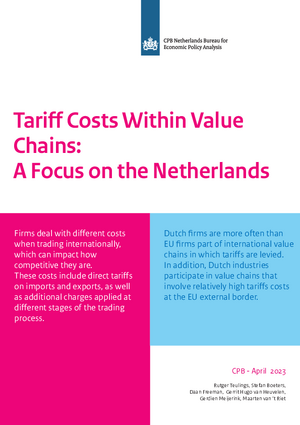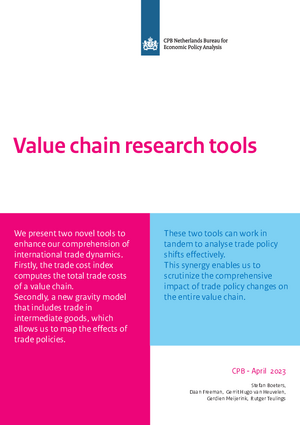Netherlands benefits from international policy on tariff costs in value chains
This trade index shows that Dutch firms are more often than EU firms part of international value chains in which tariffs are levied. This is mainly due to the higher number of taxed border passages in those value chains. However, the average tariff at each taxed border passage is almost equal to the EU average. This means that international trade policy and worldwide tariffs, are particularly important for the Netherlands.
Downloads
The insights from this index reveal that Dutch firms more frequently participate in international value chains subject to tariff imposition, compared to their EU counterparts. This is largely explained by the greater occurrence of taxed border crossings within these chains. Notably, although the average tariff at each taxed border crossing remains nearly on par with the EU average, the implications of international trade policy and worldwide tariffs hold pronounced significance for the Netherlands.
Within Dutch value chains, relatively elevated tariff expenses are applied at the EU's external boundary. This underscores the potential for the EU to enhance cost considerations related to tariffs, particularly in the realm of services. While services typically do not bear direct tariffs, they still experience indirect tariff effects due to the intertwining of service and goods value chains.
These two tools may complement each other in dissecting trade policies shifts. This enables us to scrutinize, among other things, how changes in trade policy can propagate throughout the entire value chain.
Downloads
.
Authors





Authors







